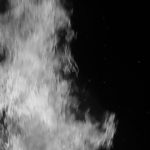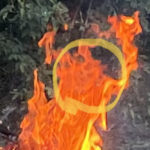Faces In Fire Website Rules
- Have fun and remember this is a family site.
- Write your opinions on what you see.
- No explicit or rude comments they will be erased.
- Upload only pictures in digital form taken ethically. (.jpg .png)
- Always check the rules for open fires in your district.
- Buy all of your camping supplies from the Amazon Link on our website.
- If you like our content and would like to donate to help us keep the lights on hit the donate button (soon).
Rules for Safely Making and Monitoring a Fire
There’s nothing like the taste of fresh fish cooked over an open fire. If you’re having that fish fry on the shoreline, make sure that your catch is the only thing that sizzles. You don’t want to lose your favourite fishing hole to a dangerous wildfire.
Unextinguished and unattended campfires spark wildland fire an average of once a day during the summer season. These fires can be expensive and hard to control. They don’t just burn forests. They can affect fish and shoreline habitat, too. If your fire escapes and starts a wildfire, you can be held responsible for the cost of putting it out.
Don’t want to be on the hook for causing a fire? Follow these campfire safety tips:
- Build your campfire on bare soil or rock.
- Choose a spot that’s sheltered from the wind and at least 3 meters from anything flammable.
- Keep your fire small and never leave it unattended. When you’re ready to put it out, soak the campfire with water, stir the ashes to uncover hot coals, and soak it.
Campfire Safety!
Follow these easy steps to build a campfire safely.
1. Choose a site
- Pick a site close to a water source and sheltered from the wind.
- Build your fire on bare rock, bare dirt or other non-combustible material (mineral soil).
- Build your fire at least one metre away from any flammable materials.
- Make sure the space above the fire is at least three metres from overhanging branches and vegetation.
2. Prepare the site
- Clear a space about two metres wide for the fire.
- Remove pine needles, grass, leaves and twigs.
- Scrape the area right down to the mineral soil.
- Ensure you have a pail of water and a shovel to control the fire.
3. Build your campfire
- Keep your fire small to a maximum of one metre high and one metre wide.
- Remember that small fires are safer, easier to control and easier to put out.
- A small fire will also keep cooking tools from blackening and let you get close enough to cook.
4. Stay nearby
- Never leave a campfire unattended.
- Remember that you are responsible for tending your campfire, ensuring it is kept under control, and for putting it out.
5. Put the fire out
- Pour lots of water on the campfire.
- Stir the ashes with a stick.
- Pour more water over top of the campfire.
- Stir the ashes with a stick again.
6. Repeat until:
- The ashes are cold to the touch.
- The ashes don’t hiss.
- The ashes look soaked.
- No more smoke comes from the ashes.
Safety tips for kids
Always ensure children are with an adult when they are around a fire.
Never allow children to play with matches or fireworks.
Teach your children to tell an adult immediately if they see a fire burning out of control.
Shore lunch fire safety
There’s nothing like fresh fish cooked over an open fire, unless it turns into a wildfire!
While fishing or enjoying the day in your boat, remember to follow these campfire safety tips. A wildfire can affect fish and wildlife habitat along a shoreline and can be very expensive to control.
During the summer season, regions in North America experiences an average of at least one wildfire every day caused by an unextinguished or unattended campfire.
On average, more than 2500 wildfires are caused every year by recreational forest users, such as:
- Anglers
- Campers
- Berry pickers
- Canoeists
- Hunters
- Picnickers
If your shore lunch fire escapes and starts a wildfire, you can be held responsible to pay for the suppression costs and/or damages it caused.
If you have a shore lunch fire, remember the rules:
- Build the fire on bare soil or rock in a location sheltered from the wind.
- Make sure the fire is a safe distance from all flammable material, including overhanging branches.
- Keep the fire small and tend it at all times.
- Put out the fire when you are done. Soak it with water, stir the ashes and soak it again.
- Repeat until the ashes are cold to the touch.


